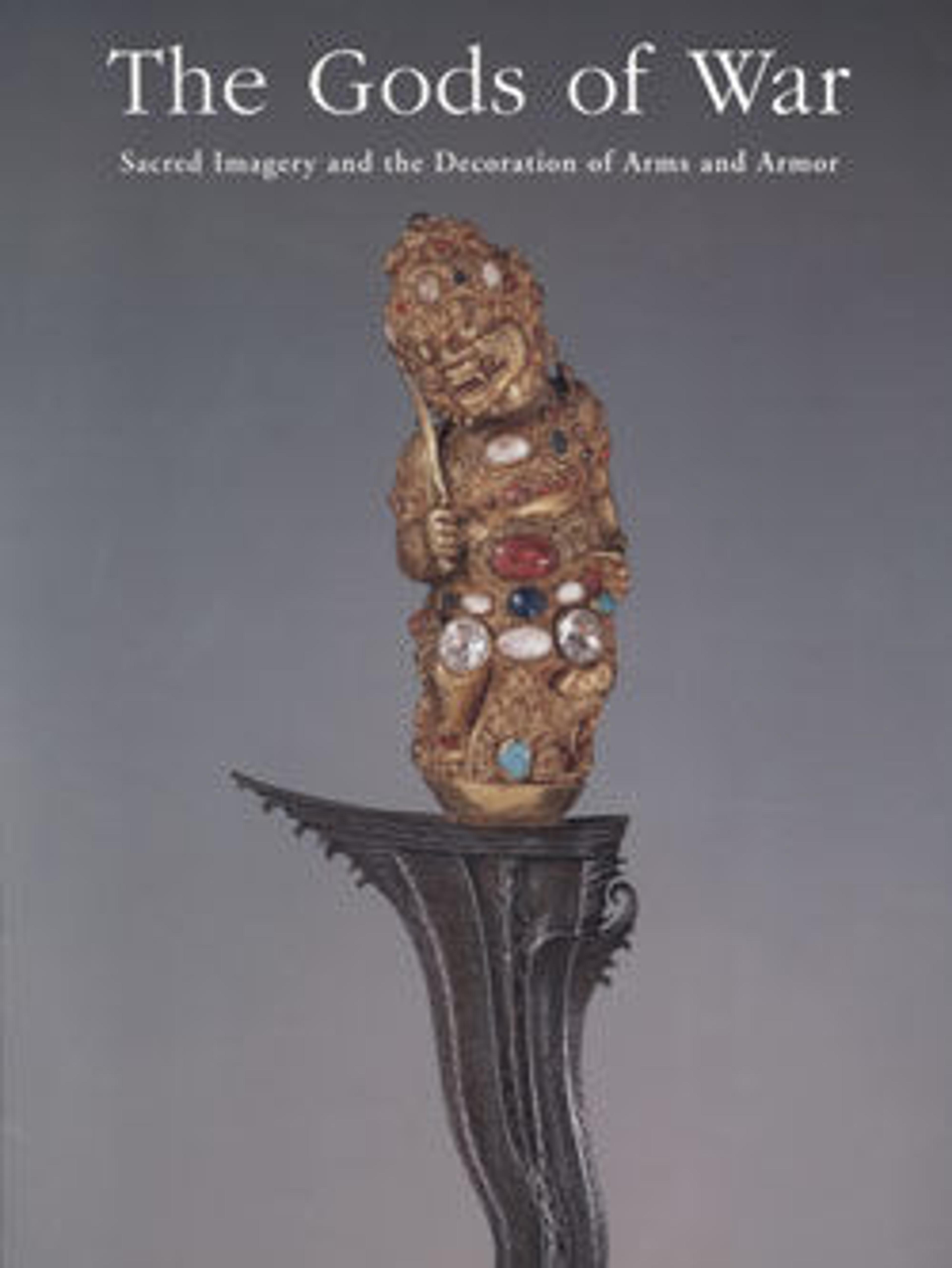Helmet Crest (Maidate)
The symbolism conveyed by a representational helmet and face mask could be enhanced by the use of a detachable crest (maidate), usually mounted on the front of the helmet just above the brim. Crests are sometimes made of iron, but more frequently they combine delicate materials such as leather, paper-mâché, or gilt and lacquered wood. Crest designs of the Edo period include a wide range of family heraldry (mon), naturalistic renditions of plants and animals, and sacred imagery. These same decorative themes are also featured on embossed iron breastplates of the period. The relatively broad surface of a breastplate afforded a skilled armorer ample room to display his talents as a metalworker and his inventiveness as an artist.
This crest and breastplate (36.25.347) share a common sacred theme: the invocation of the war god Hachiman through the display of the characters representing his name. Hachiman, one of the principal Shintō deities (kami), was among the first indigenous gods assimilated into the Buddhist pantheon in Japan. By the late eighth century he was officially accorded the Buddhist title Daibosatsu (Great Bodhisattva). He was identified as the deified spirit of the legendary Emperor Ōjin (r. 270–310) and as the particular patron of the Minamoto clan, founders of the first shogunate, both factors that may have contributed to the development of his status as the god of war. Hachiman was considered the protector of the state in times of strife and was revered as a personal protector by individual samurai of all ranks. Temples dedicated to Hachiman were built throughout Japan, where he is worshiped in both Buddhist and Shintō rites. The delicate lettering that bisects the center of the crest gives the god's honorific title, Hachiman Daibosatsu.
This crest and breastplate (36.25.347) share a common sacred theme: the invocation of the war god Hachiman through the display of the characters representing his name. Hachiman, one of the principal Shintō deities (kami), was among the first indigenous gods assimilated into the Buddhist pantheon in Japan. By the late eighth century he was officially accorded the Buddhist title Daibosatsu (Great Bodhisattva). He was identified as the deified spirit of the legendary Emperor Ōjin (r. 270–310) and as the particular patron of the Minamoto clan, founders of the first shogunate, both factors that may have contributed to the development of his status as the god of war. Hachiman was considered the protector of the state in times of strife and was revered as a personal protector by individual samurai of all ranks. Temples dedicated to Hachiman were built throughout Japan, where he is worshiped in both Buddhist and Shintō rites. The delicate lettering that bisects the center of the crest gives the god's honorific title, Hachiman Daibosatsu.
Artwork Details
- Title:Helmet Crest (Maidate)
- Date:18th–19th century
- Culture:Japanese
- Medium:Wood, gold, lacquer, and textile
- Dimensions:Diam. 8 in. (20.3 cm); Wt. 1.2 oz. (35 g)
- Classification:Helmet Crests
- Credit Line:Bequest of George C. Stone, 1935
- Object Number:36.25.228
- Curatorial Department: Arms and Armor
More Artwork
Research Resources
The Met provides unparalleled resources for research and welcomes an international community of students and scholars. The Met's Open Access API is where creators and researchers can connect to the The Met collection. Open Access data and public domain images are available for unrestricted commercial and noncommercial use without permission or fee.
To request images under copyright and other restrictions, please use this Image Request form.
Feedback
We continue to research and examine historical and cultural context for objects in The Met collection. If you have comments or questions about this object record, please contact us using the form below. The Museum looks forward to receiving your comments.
